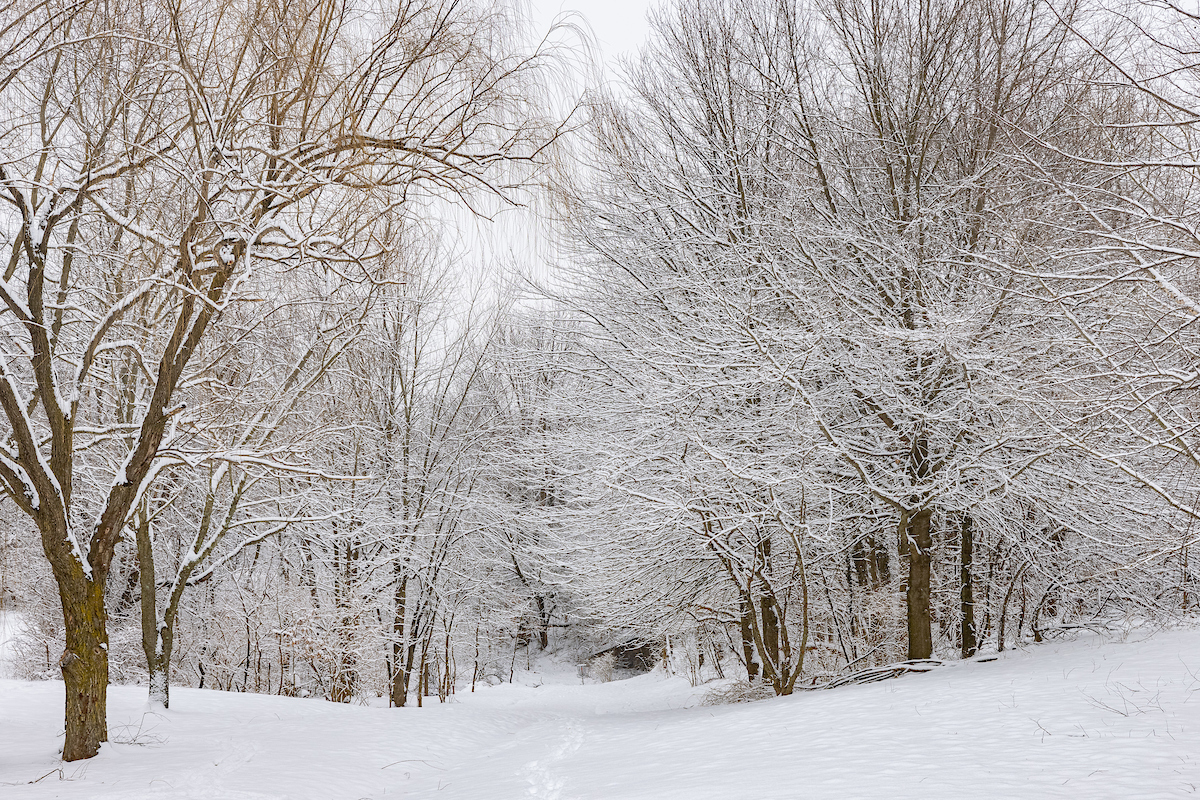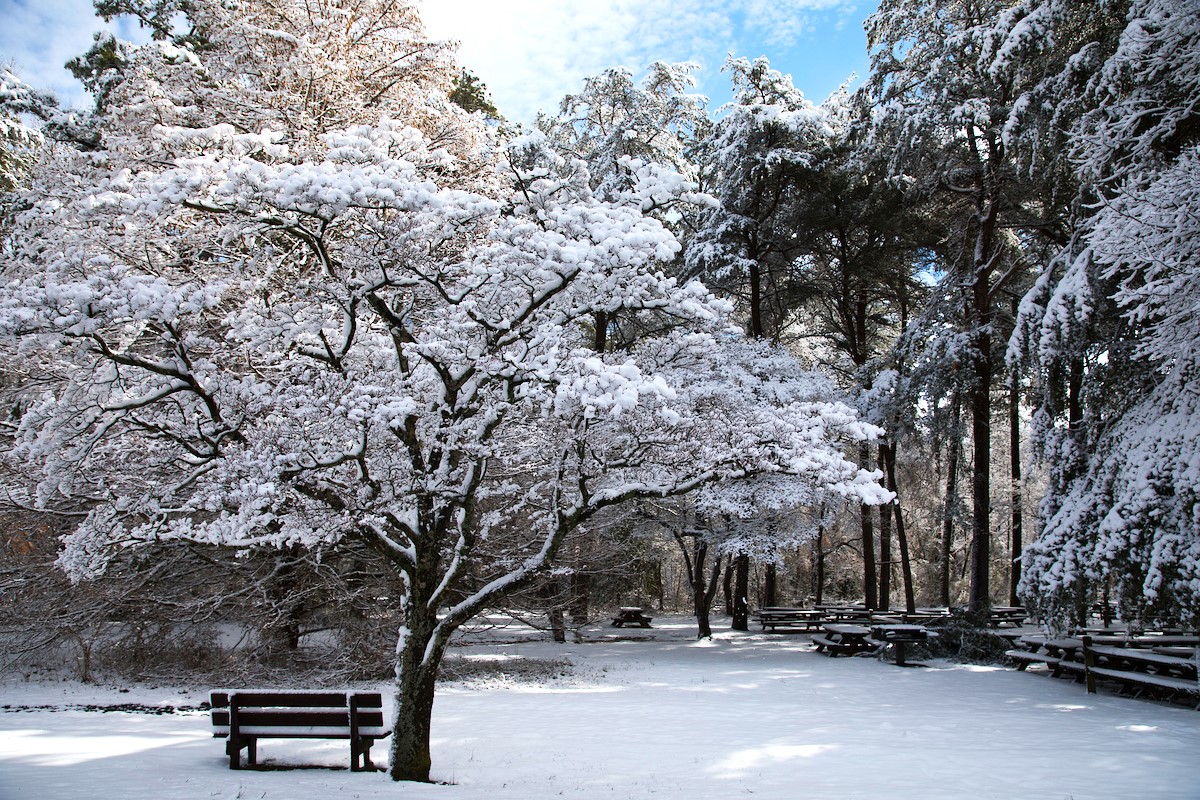
February 3, 2021
By Ana Mulcahy, Environmental Education Intern at Brandywine Creek State Park
What is an Invasive Species?
While all plants may have their charm, not all are as beautiful on the “inside” as they may appear. Just as every species has a unique melding of evolutionary adaptations and mutations that are not always transferable to other species, ecosystems have layered adaptations and complexities that are easily thrown off balance by the introduction of a foreign subject. This fragile balance primarily has to do with the food web and trophic levels. Each ecosystem is specially tailored to the native species (plants, insects, and animals) and resources (sunlight, water, temperature) that comprise a given region. When foreign species are introduced, whether accidentally or intentionally, native species may not eat them because the foreign species are unfamiliar. Thus, the “invading” species is able to consume without being controlled, leading to a population explosion. There are other ways this trend can occur, as well, but lack of predation is the most common environmental control (or lack thereof).

Why are Invasive Species Harmful?
Competition for resources makes this unchecked population boom particularly problematic. Invasive species can spread so rapidly that they overtake the resources that native species require for survival. Invasive species can also severely damage, displace, or even eliminate native populations. Additionally, they drastically alter the landscape. The damage caused by invasive species is usually irreversible, with maintenance and control measures being short-lived as they are outpaced by the invader’s relentless spread. When it comes to invasive species, the emphasis is on prevention rather than reaction.
Unfortunately, this trend is not unfamiliar to Brandywine Creek State Park or the surrounding region. Even as a state park, it is difficult to monitor and control invasive species at the rate that would be necessary to fully stop their spread.
In this blog, we’ll identify and discuss a handful of invasive plant species found here at the park.
Burning Bush
First, we have winged euonymus, a.k.a. burning bush. This shrub, native to northeastern Asia, was imported to the U.S. for the first time in 1860 as an ornamental plant. One might wonder why anybody would desire such a strange-looking shrub now, but in the early winter, burning bush flashes shades of fiery red, the reason behind its nickname and popularity. As the story often goes, burning bush became an explosive invasive species shortly after its introduction. Today, there are entire fields of burning bush in this area displacing and threatening native woodland species. If you hike up the Brandywine Trail, you are sure to find yourself in the middle of one. Burning bush can be identified by its fiery leaves in the early winter, small red berries, or, most consistently, its winged bark.

Bradford Pear
The Bradford pear, Pyrus calleryana, is actually a tree! We control it at the park by frequently mowing the meadows, which prevents it from growing to its full potential. However, if you look closely, you’ll notice the bark optimistically emerging from the ground. If you see specks of red or maroon in the rolling meadows, you are very likely seeing Bradford pears.
The Bradford pear, native to China and Vietnam, became popular in the U.S. in the 1960s for its pretty white flowers and fast growth. Unfortunately, the Bradford pear is structurally unstable when it grows high enough; its V shape trunk is prone to breaking from strong winds and storms. This poses a risk to neighboring structures and homes. With a lack of natural controls, the Bradford pear has spread out of control and is hard to manage without herbicides, making prevention particularly important.

Wineberry Shrub
Another invasive plant that has become a bit too comfortable on our lands is the wineberry shrub or Rubus phoenicolasius. Introduced to North America in the 1890s to aid in raspberry breeding, the plant instead invaded natural areas, displacing native vegetation and edible berry shrubs. Wineberry spreads in dense, spiky thickets, rendering the land largely inaccessible for wildlife and humans. Wineberry can be identified by its distinctive hairy, red stem.

Garlic Mustard
Native to Europe, garlic mustard, Alliaria petiolata, was brought to North America as a kitchen garden plant by colonialists. Commonly used for cooking, garlic mustard quickly escaped its garden plots and spread into the wild, overtaking native groundcover plants. This is just one example of how people with innocent intentions can spur displacement of native species and ecological damage.
Garlic mustard typically grows to about three feet tall. The plant is characterized by its leathery green, kidney-shaped leaves on the bottom and smaller, more triangular leaves towards the top. In the early spring, the plant blooms with white petaled flower clusters. When crushed, the leaves usually smell like garlic. Note: please do not cut or step on garlic mustard, for this can encourage new stem growth and further spread.


Please note that this is just a small sampling of local invasive species and that the list is, unfortunately, much longer. Among the other invasive plants in northern Delaware, we have stinging nettle, porcelain berry, oriental bittersweet, English ivy, etc.
Hopefully, this introduction to winter invasive plants has inspired you to consider the long-term impacts of the plants you choose to grow at home. It is far too easy to purchase invasive plants at nurseries or online, but just because certain plants are commercially available does not mean they are safe or native! Gardening and landscaping with native plants is highly recommended. However, if you must use non-native species be sure to choose plants that are not invasive. A list of invasive species in our region can be found here.
While the list is vast of plants that should be avoided for ecological reasons, do not be deterred! There are many beautiful and ecologically beneficial plant species native to this area to choose from. For inspiration, you can visit our pollinator garden at the nature center entrance.



